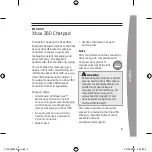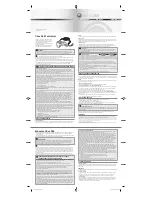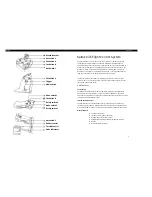
MCT-MC
4.3
FDC MCT-MC
- 32 -
Configuring the MCT-MC
A
Deviation high alarm
is dependant upon the control set point and alerts the operator when the process value
deviates too high over the set point value. For deviation high alarms, the alarm set point is entered as a positive
value. When the process is higher than the control set point plus the alarm set point (PV > SV+ASP), a deviation
high alarm occurs. When the process value falls below the control set point plus alarm set point minus the
alarm hysteresis (PV < SV+ASP-AHY), the alarm is off.
A
Deviation low alarm
is dependant upon the control set point and alerts the operator when the process
deviates too far below the set point value. For deviation low alarms, the alarm set point is entered as a negative
value. When the process is lower than the control set point plus the alarm set point (PV < SV+ASP), a deviation
low alarm occurs. When the process value rises above the control set point plus alarm set point plus the alarm
hysteresis (PV < SV+ASP+AHY), the alarm is off.
A
Deviation band high/low alarm
sets two trigger levels relative to the control set point value. For deviation
band alarms, the alarm set point is entered as a positive value. The two alarm trigger levels are then defined
as SV+ASP and SV-ASP for the high and low alarm values. When the process value is greater than the high
alarm value (PV > SV+ASP) or less than the low alarm value (PV < SV-ASP), a deviation band alarm occurs.
When the process value is within the high and low trigger levels by the value of the alarm hysteresis (PV <
SV+ASP-AHY and PV > SV-ASP+AHY), the deviation band alarm is off.
The
End of automated program alarm
is not associated with the process value or set point. The alarm is
turned on upon completion of an automatic ramp/soak program. The alarm will turn off when another program
is started, when power is cycled to the loop control board or when the “Reset” button is pressed on the Alarm
screen of the runtime application.
The
Hold mode alarm
is not associated with the process value or set point. The alarm is turned on when the
running program is in hold. The alarm will turn off when the program is placed back into run or the program is
stopped. Note that this “alarm” is not indicated on the MC interface.
The
Static mode alarm
is not associated with the process value or set point. The alarm is turned on when the
loop control is in the single set point (static) mode of operation. The alarm will turn off when the loop control is
running a ramp/soak program. Note that this “alarm” is not indicated on the MC interface.
4.3.25 Alarm (1-3) Mode
The Alarm 1, 2 and 3 Modes are used to select the mode of operation for outputs 2, 3 and 4 respectively if the
output function is configured as an alarm or reverse alarm. The mode selections are mutually exclusive, i.e.,
selecting one will turn off the others. Once the desired alarm mode has been selected, press the “Done” button
to set the alarm operation for the loop control board output and return to the main Loop Configuration screen.
Normal alarm action
has the alarm output off in the non-alarm condition and on in the alarm condition. The
output state is inverted for a reverse alarm output.
Summary of Contents for MCT-MC 4.3
Page 1: ...MCT MC 4 3 User Manual MCT MC 4 3 User Manual Rev A February 2018...
Page 176: ...MCT MC4 3 FDC MCT MC 176 Appendix...
Page 177: ...MCT MC4 3 Appendix 177 FDC MCT MC Open Frame Power Supply Specifications...
Page 178: ...MCT MC4 3 FDC MCT MC 178 Appendix...
Page 179: ...MCT MC4 3 Appendix 179 FDC MCT MC A 6 Power On Delay Relay Specifications GE1A C10HA110...
Page 180: ...MCT MC4 3 FDC MCT MC 180 Appendix...
















































